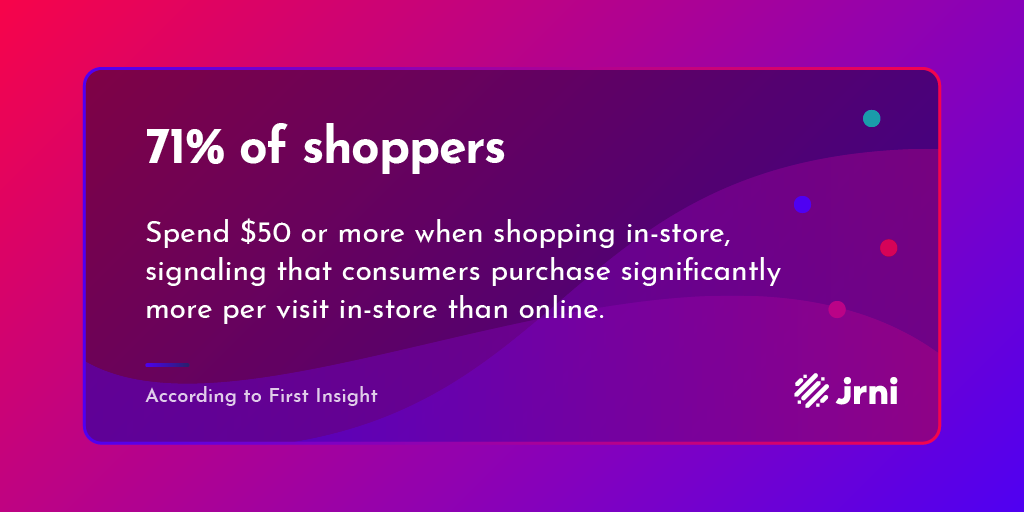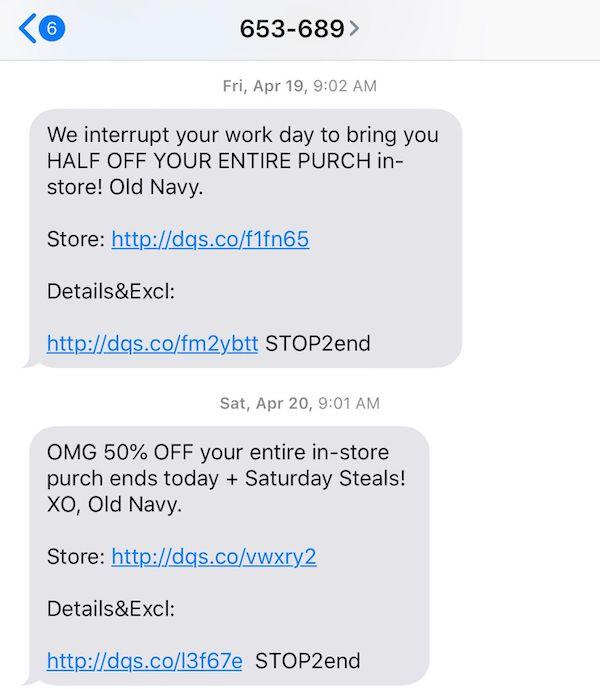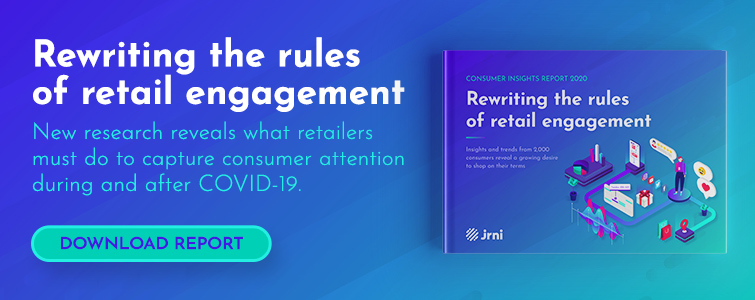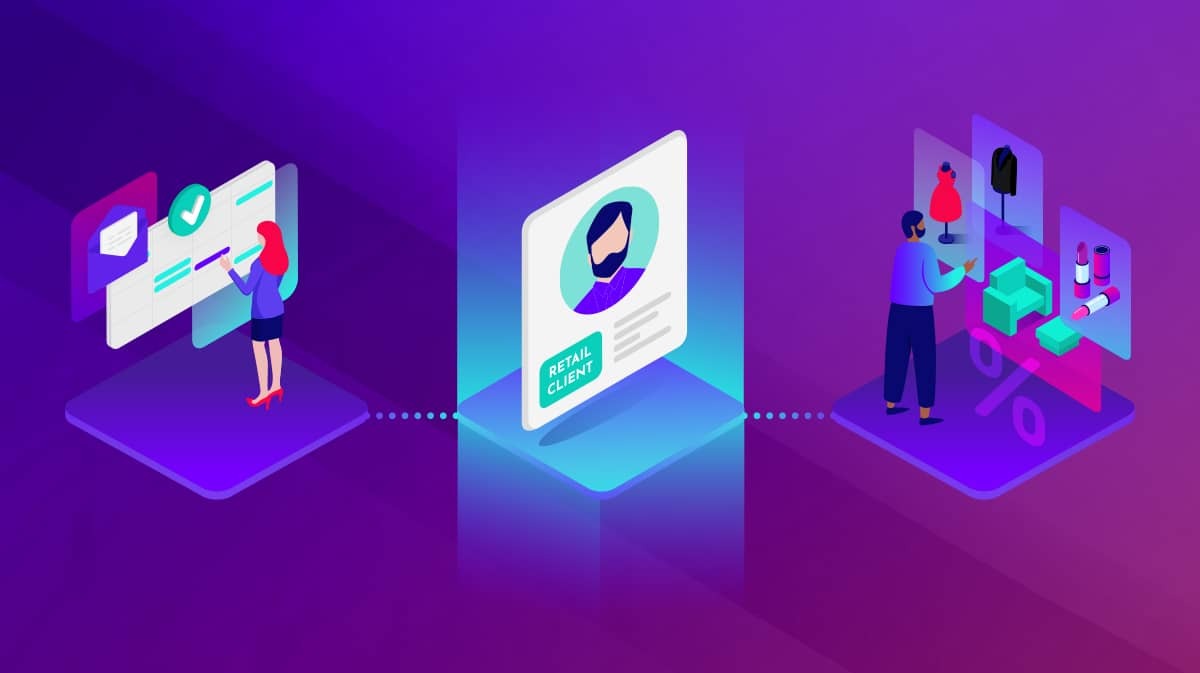According to a First Insight Report, 71% of shoppers spend $50 or more when shopping in-store, indicating that consumers purchase significantly more per visit in retail stores than online.
In today’s digital age, more consumers are researching and purchasing products via their smartphones, tablets, and computers at home. While it’s convenient to purchase products quickly with a swipe of the screen or a click of the mouse, customers are losing out on having in-store experiences
It’s
Here’s how retailers can increase their foot traffic and create exceptional customer experiences.

How to increase retail store foot traffic
1. Store signage
One of the first interactions that consumers have with brands in-store is their signage. A store’s sign visually displays the brand and attracts people in-store. Brick and mortar retailers must properly display their exterior signage
Once consumers enter stores, in-store signage must help consumers buy products
2. Marketing
One of the most important strategies to attract more foot traffic is marketing.

3. Mobile
Mobile is a consumer’s most personal device, so by having conversations with brands via the device signals that customers are eager to engage more with retailers
Brands can send exclusive promotions or offerings to their mobile subscribers, inviting them to purchase in-store goods at discounted prices. Retailers can also use push notifications to alert customers about new items or flash sales in-store
Old Navy is a great example of a brand that sends consumers text messages to drive them in-store. Text messages

4. Websites
Retailers’ websites are perfect vehicles to showcase product images and descriptions. According to
Like with mobile marketing, retailers can offer exclusive promotions and incentives to encourage online browsers to purchase products and services in-store.
As more consumers use online to research and offline to purchase, retailers must ensure that their websites provide enriching experiences for consumers that move them from digital to physical.
5. Social media
Social media
On social media, retailers can host contests with customers and award them in-store promotions. They can also ask them to post reviews about products and services with chances to receive exclusive rewards that they can redeem
6. Appointments
In-store appointments are
Scheduling in-store appointments allows retailers to give customers personalized services
By offering appointments, there are enormous opportunities for upselling and cross-selling; for example, for customers getting fitted for suits, in-store stylists can offer suggestions for shirts, belts, and shoes.
For customers looking for the right dresses, in-store stylists can offer recommendations for accessories such as jewelry and handbags. These appointments deepen customer relationships because of the time and attention given.
Read more: How to choose an enterprise appointment scheduling solution.
Read more: The ROI of appointment scheduling
7. Events
Hosting events and providing entertainment in physical stores can boost retailers’ annual sales by 14% on average, according to Barclaycard.
Events are also effective for increasing foot traffic and creating exciting customer experiences. Hosting in-store events allow brands to give their customers live experiences and interactions with them, which generate loyalty.
With events, brick and mortar retailers can invite customers to the launch of new products, or they can have them attend VIP gatherings with exclusive promotions or offerings.
If retailers are opening new stores, they can turn them into events by inviting customers to preview sales with in-store promotions. Events can even produce benefits to brands’ bottom lines.
8. In-store experts
One of a brand’s biggest competitive advantages is its in-store staff, and retailers must build their brands around them. These individuals can share their extensive knowledge of products and services with customers, illustrating that their products and services
As with appointments, in-store experts have opportunities to upsell and cross-sell to consumers. For example, consumers might be in the market for a certain
9. Loyalty programs
Loyalty programs are the pinnacle of brands’ experiences with their consumers. Customers who’ve joined loyalty clubs are brands’ biggest fans because they either consistently purchase products or services from them or they enjoy their experiences with them.
With loyalty programs, retailers have opportunities to take their customer relationships to the next level. They can establish deeper connections with their top customers by knowing their preferred products or services and their purchase histories. These insights allow brands to customize promotions and offerings to customers who’ve voluntarily opted into their favorite brands.
How top retailers drive in-store traffic
From keeping inventory fresh to building stores of the future, retailers are savvy in their strategies to increase foot traffic. Here are some examples from top brands:
TJ Maxx
The brand has a motto of “door to floor in 24,” meaning that the retailer’s goal is to distribute products on the floor within 24 hours of delivery. This strategy results in consumers purchasing goods at faster paces
This approach keeps styles fresh, so customers can almost always find new merchandise with every visit. And with products at discount prices, potential customers will undoubtedly flock to their nearest TJ Maxx for some great in-store sales.
Lululemon
Athletic apparel maker Lululemon’s name alone might draw customers in-store, but when consumers shop in
The innovative retailer recently unveiled a new in-store format, designed to create more immersive shopping experiences, according to Chain Store Age. In July, Lululemon plans to debut a 25,000-square-foot “experiential” store in Chicago that will include yoga studios, mediation spaces, healthy juice and food selections, and community gathering areas.
The goal? To develop stronger relationships between the brand and its loyal customers.
“We believe we are operating from a position of strength as we invest in creating dynamic experiential moments for our communities to connect and come together,” said Lululemon CEO Calvin McDonald.
Ulta Beauty
Beauty store chain Ulta Beauty is mastering the in-store experience by unveiling stores of the future, or what it’s calling “digital innovation ecosystems.”
According to Retail Info Systems, the U.S. beauty giant
In these stores, Ulta is using various technologies to drive consumers from the web to the store via chatbots, artificial intelligence, and augmented reality. Perhaps most interesting is that Ulta’s “Ultimate Rewards” loyalty program now has 32.6 million active members, growing 14% on a rolling 12-month basis, according to Retail Info Systems.
This growth signals that consumers are
Want to learn more about recent changes in consumer behavior? Then check out our recent research report: "Rewriting the rules of retail engagement".




